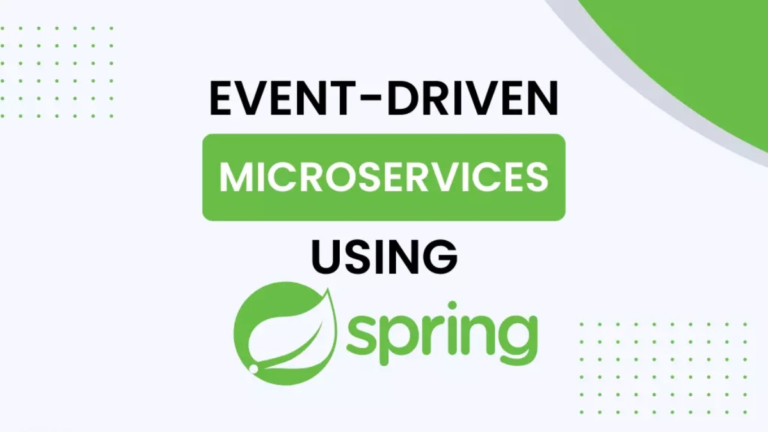
In today’s microservice era, event-driven architecture is becoming more common. It allows microservices to communicate asynchronously. For example, when an order service receives an order, it can send an event to a restaurant service over Kafka’s messaging channel. The restaurant service then consumes the event, prepares the food, and alerts the user, leaving the order service waiting for a response. This is asynchronous communication, in which services do not have to wait for one another to finish their own tasks.
This Articles Contents
Implementing Events Within a Single Microservice
However, what if we wish to use events within a single microservice or to communicate between applications? This is where spring events come into play. Spring events allow us to publish events throughout the application. Let us consider a healthcare project that includes a feature for patient discharge. The method consists of numerous steps:
- Finalizing the patient bill.
- Update the patient’s medical records.
- Assigning the room to the next patient.
- Sending a discharge notification.
To handle these tasks, we can create individual services for billing, record updates, housekeeping, and notifications. If we tightly couple these services within a discharge service, it leads to several problems:
- Tight Coupling: Changes in one service might require changes to the discharge service.
- Difficult to Extend: Adding new services requires changes to the discharge service.
- Testing and maintenance: Testing becomes difficult due to the necessity to emulate many services.
- Lack of Asynchronous Processing: All service calls are executed sequentially, which slows down the overall discharge process if one service takes longer.

Using Spring Events for Loose Coupling
To deal with these concerns, we can use Spring events to decouple the services. The discharge service will broadcast an event, and the other services will listen to it and do out their jobs. This is how you do it:
Create an Event Class:
public class PatientDischargeEvent extends ApplicationEvent {
private String patientId;
private String patientName;
public PatientDischargeEvent(Object source, String patientId, String patientName) {
super(source);
this.patientId = patientId;
this.patientName = patientName;
}
// Getters and Setters
}
2. Publish the Event from the Discharge Service:
@Service
public class DischargeService {
@Autowired
private ApplicationEventPublisher eventPublisher;
public void dischargePatient(String patientId, String patientName) {
eventPublisher.publishEvent(new PatientDischargeEvent(this, patientId, patientName));
}
}
3. Listen to the Event in Other Services:
@Service
public class BillingService {
@EventListener
public void handlePatientDischarge(PatientDischargeEvent event) {
// Logic to finalize billing
}
}
@Service
public class RecordService {
@EventListener
public void handlePatientDischarge(PatientDischargeEvent event) {
// Logic to update patient records
}
}
4. Enable Asynchronous Processing:
@Configuration
@EnableAsync
public class AsyncConfig {
}
@Service
public class BillingService {
@Async
@EventListener
public void handlePatientDischarge(PatientDischargeEvent event) {
// Logic to finalize billing
}
}
Spring events enable loose coupling, making the application easier to extend, test, and manage. In addition, activating asynchronous processing promises that each service runs independently, lowering discharge time.
Finally, Spring events provide an effective method for handling intra-application events, making our microservices more flexible and efficient. This strategy avoids the drawbacks of closely connected services while maximizing the benefits of asynchronous communication inside the same application.
GitHub Link :- Source code